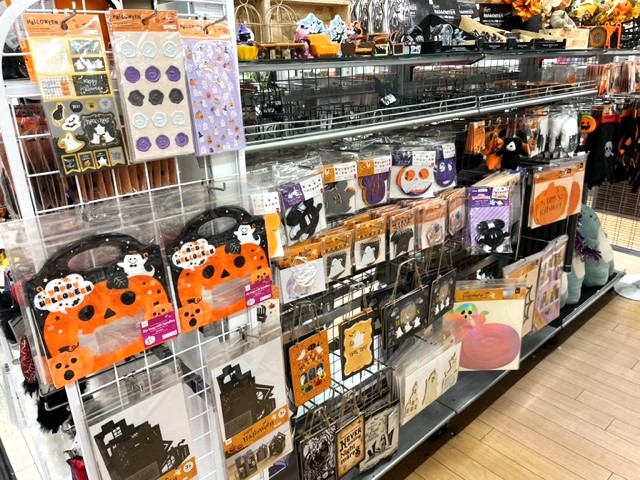
letters-home-halloween-in-japan
A Shelby County Post reader wrote to ask if Japan celebrated Halloween. The answer is, sort of. While it has all the commercial aspects of the holiday clearly displayed, it isn’t something that is as big or as widely celebrated nationally and in the same way as it is in the United States.
There are pockets where Halloween has become huge, which I will comment on in this column.
Halloween has been on the Japanese radar for a long time, meaning people have been aware of it and had a curiosity about it as a holiday, but the real push toward it becoming a “thing” here I think occurred in the late 90s when Tokyo Disneyland first introduced the concept of Halloween in its theme park.
From the early 2000s, Halloween became a verified yearly event at Tokyo Disneyland, further cementing its popularity into the mainstream consciousness here. Universal Studios Japan also began its own celebration of Halloween at its park in 2002, which brought the holiday to the attention of mainstream citizens.
When I first started teaching in public junior high schools back in 1989, I remember suggesting to some of my Japanese teachers that we incorporate Halloween into our lesson plans and allow the students to have an authentic Halloween experience. One teacher in particular was very much onboard and we proceeded to decorate the hallways and classroom, as well as preparing lessons and activities that had a Halloween theme. I suggested we dress in costumes and allow the children to dress up, too.
It never occurred to me back then that the kids would have no idea what a Halloween costume was, so on the appointed day, the children changed into their “Halloween costumes” which were basically their street clothes. Since they had to wear uniforms to school every day, it was fun for them to wear jeans and T-shirts at school, and for them, this constituted being in a “costume.”
Of course, I made a costume to be a Crayola crayon, and I brought a costume for the teacher to wear, which was very basic: a cape, a hat and some glasses with a nose and mustache. The kids loved it!
Part of the Halloween-themed lesson was to carve pumpkins, so the teacher prepared several for the activity. I had just recently arrived to Japan and had no idea that Japanese pumpkins were small, green, and completely solid inside. It was quite the chore to carve such a tiny pumpkin and hollow it out. The big orange pumpkins that are great for carving weren’t available, so we worked with what we had.
Fast forward some 35 years and today, it is quite easy to find anything and everything related to Halloween. That first year we had to make all the decorations by hand, but today many stores feature Halloween displays with a variety of spooky items that can be used to decorate. I would like to think that the Japan Exchange and Teaching (JET) Program that brought thousands of foreign language teachers to the shores of Japan (from the late 80s until today) had something to do with bringing the culture of Halloween to the masses. I know many foreign teachers try to include lessons related to the holiday to offer a bit of cross-cultural understanding into their English classrooms here.
The concept of wearing costumes for Halloween is now an entrenched tradition, but mostly for adults. Only once have I ever seen children dressed in costumes going door to door in my neighborhood, and I suspect this was prearranged by several families to allow the children to visit specific homes that agreed to participate just to allow them the experience of saying “Trick or Treat” and to receive candy while wearing a costume. This custom isn’t widespread here by any means.
Prior to Tokyo Disneyland adopting the holiday for its purposes, many foreigners would dress up on Halloween and ride the JR Yamanote train, which is on a huge loop around central Tokyo. People would board the train donning sometimes very elaborate, usually spooky, occasionally disturbing, or hilarious costumes and just ride the train celebrating (and too often acting like fools).
In the early years, it was more subdued and people were respectful towards the regular commuters. As it grew in popularity, people began to become more rambunctious and more alcohol and food items were added to the mix, which caused a mess on this very busy train line.
As expected, this disrupted the evening commuters who were trying to get home after work, and it just got to be too big and disruptive because Japanese young adults started to get in on the act. Later, the custom of riding the train on Halloween moved to celebrating outside the station in Shibuya where thousands of people gathered in costumes to revel in the streets to celebrate. Again, eventually this became too disruptive for the area so the city officials in Shibuya have tried over the years to dissuade people from gathering there, but without much success. The festivities have since spread to places like Osaka and Roppongi Hills (Tokyo), and Ikebukuro (Tokyo).
Sadly, the revelers get a bit too exuberant and, in the past, there have been issues of violence and destruction of property and just general drunkenness, leading to fisticuffs and other issues. This year, 2023, the Shibuya Halloween celebrations have been officially canceled. The mayor of Shibuya has for a number of years strongly discouraged people from taking over the streets to celebrate, but due to safety concerns, attendance is basically banned this year from October 28-31.
It will be interesting to see if people abide by the cancellation and not turn out for the annual, huge street party. There was never any real organizer; it just occurred organically until it became the huge festival it is today. Each year the area gets a lot of international press because it has become such an attended event. Besides the actual costumed revelers, it has attracted tens of thousands of tourists and onlookers which added to the problem of overcrowding. As the Halloween event grew over the years, the authorities did try to curb its appeal by banning public alcohol consumption and asking local convenience stores in the area to not sell alcohol during the event.
This year there is a general curfew from 6 p.m. until 5 a.m. and the area around Shibuya station will have over 100 security guards patrolling the area.
I personally have my doubts if these precautions and edicts will be heeded. Many regular commuters and citizens must use the station and area as a matter of course for their daily life, making it hard to regulate the area. Really motivated Halloween aficionados will no doubt find a way to get around the regulations and will still try to celebrate in the area, even if that means bringing their costumes to change into on the street and bringing their own alcohol from outside the area.
It's too bad that such a fun and joyous celebration became so unwieldy and now it is being discontinued, but had the local government taken an active interest early on and anticipated the crowds by putting forth commonsense regulations that people would become accustomed to following, and then maybe it wouldn’t have become the big problem it did. One of the biggest issues for shops and businesses in the area was the clean up the day after. No trash receptacles means that all the empty beer cans and food wrappers get thrown on the street, not to mention insufficient restroom facilities for tens of thousands of people to use. The alcohol consumption is always massive.
Still, though, even without the huge street party on the streets of Shibuya, Halloween has become a yearly fixture in Japan with cafes, restaurants, and shops offering Halloween-themed products and foods. The 100-yen stores in Japan have huge displays of Halloween goods to help people with their decorating needs.
So, while it can’t be regarded as a purely children’s-oriented holiday in Japan like it still largely is in the U.S. (even though U.S. adults have hijacked it, as well, having huge adult-themed parties), it is still celebrated more widely today than in the past and its popularity will no doubt continue to grow as more people are exposed to Halloween as a holiday tradition.
Get the most recent Shelby County Post headlines delivered to your email. Go to shelbycountypost.com and click on the free daily email signup link at the top of the page.





